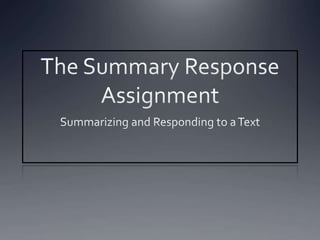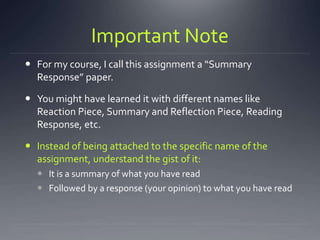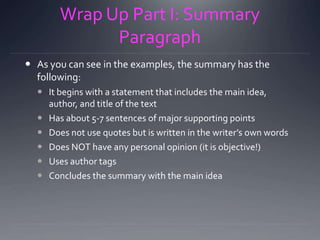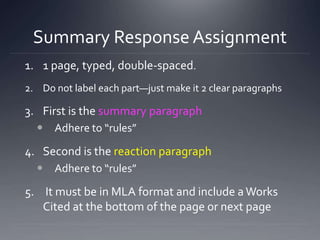The document provides instructions for writing a summary response paper, which consists of two parts: a summary paragraph and a response paragraph. It explains that the summary paragraph should concisely summarize the key points of the original text without personal opinions. The response paragraph allows for reaction and critical thinking, where the writer can agree or disagree with aspects of the text and support their response with a quote. Examples are provided for each paragraph type. The document outlines best practices for each section and emphasizes focusing on one main idea or point per paragraph. It concludes by specifying the assignment requirements, which are to write a one-page paper with the two paragraphs in MLA format with a works cited list.














